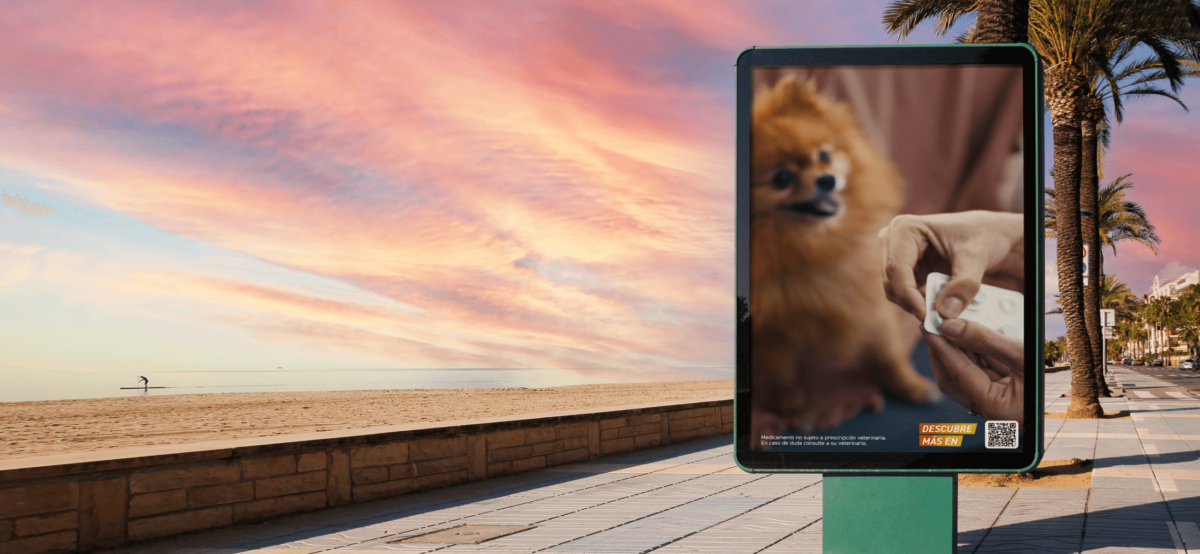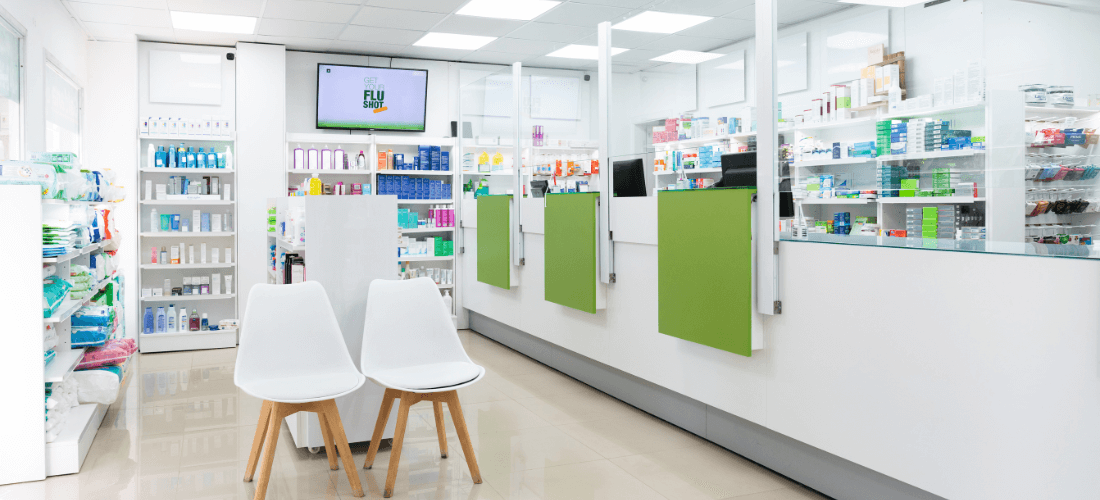| October 11, 2021
Digital out-of-home strategies for healthcare and pharmaceutical advertising
Advertising in the healthcare and pharmaceutical space can be challenging. Privacy regulations, skeptical consumers, and the personal nature of medical decisions make it difficult to reach patients through digital channels without crossing ethical lines.
By combining privacy-compliant targeting with contextual, location-based messaging, digital out-of-home (DOOH) advertising delivers relevant healthcare messages when and where they matter most, building the trust needed for medical decision-making.
How to reach health and pharma consumers with DOOH
Healthcare brands are doubling down on marketing—spending over $2.9B in 2024 alone among the top 10 pharma companies—to better connect with professionals and patients. But in a crowded, cautious market, relevance and credibility are key. Success depends on delivering transparent, contextually relevant messaging.
Many still face challenges: creating cohesive cross-channel experiences, breaking down data silos, and accessing real-time insights to reach audiences at the right moment. That’s where DOOH excels. It enables measurable, privacy-conscious campaigns powered by contextual signals and location behaviour—instead of cookies—helping healthcare brands reach the right audience, in the right place, at the right time.
Build awareness and drive consideration across the patient journey
Healthcare and pharma ads can face skepticism—but the right context can make all the difference. In fact, 45% of patients trust healthcare messaging more when it includes OOH, and over half are more likely to act on ads seen in a doctor’s office.
To position your brand as a credible health resource, focus on delivering accurate, relevant content in high-traffic, health-conscious environments. From early research to treatment consideration, OOH meets patients at every stage:
- Audience-driven screens: Reach your ideal audience across retail, wellness, and community spaces that over-index for health-conscious consumers.
- Place-based environments: Hospitals, pharmacies, and doctor’s offices provide built-in credibility and keep health messaging contextually grounded.
- Outdoor placements: Billboards, urban panels, and transit shelters near care centers keep your brand visible during key decision-making moments.
When patients begin evaluating care options, they’re especially receptive to messaging that informs rather than sells. In fact, 36% of consumers pay attention to OOH ads that introduce new healthcare products and programs in a timely, educational way.
OOH can also guide patients at critical decision points—like choosing where to get care. Location-based targeting is especially effective, with 37% of consumers interested in ads for local care facilities. Point-of-care placements further boost impact: 59% of patients notice brand ads in medical settings, and 84% are more likely to discuss them with their doctor.
For added relevance, tailor creative to real-time conditions—like flu season or allergy alerts—to ensure your messaging stays timely and helpful.
Target the right audience in everyday moments
Out-of-home advertising gives healthcare and pharma brands a unique opportunity to connect with high-intent, health-conscious audiences throughout their daily routines.
- Parents are often on the go, navigating busy schedules with kids in tow. OOH placements near schools, family attractions, or retail centers can help reach this group when they’re outside the home and in decision-making mode.
- Family caretakers frequently engage with local pharmacies, discount retailers, and community clinics, making targeted signage in these locations especially effective.
- Pharmacy patrons, especially those 55+, regularly visit retail locations where in-store displays and nearby screens can drive awareness at the point of care and purchase.
- Health & fitness enthusiasts tend to engage with wellness-related messaging in environments that align with their lifestyles, like gym screens, fitness studio lobbies, and urban walking routes.
- Healthcare professionals attending industry conferences or commuting to and from medical hubs can be reached through airport DOOH, hotel screens, and venue signage. Tailor creative to match conference themes or specialty topics for added impact.
Promote telehealth and drive omnichannel engagement
As telehealth adoption increases, 17% of consumers are most interested in OOH ads that promote virtual offerings or provide information on mobile apps. Use DOOH to drive traffic to your digital platforms. Include clear calls-to-action that encourage app downloads or website visits, then retarget these audiences across mobile and digital channels, delivering branded impressions at each audience touchpoint.
To make campaigns even more actionable, incorporate interactive elements like QR codes, social prompts, or touch-enabled displays. A quick scan can direct viewers to a microsite, product page, or mobile wallet offer—bridging the gap between physical exposure and digital engagement. These saved offers can trigger timely reminders based on location or expiration, keeping your brand top of mind and driving follow-through.
Case study: Boehringer Ingelheim’s DOOH success story
Global pharmaceutical company Boehringer Ingelheim turned to programmatic DOOH to increase brand awareness and sales of its pet antiparasitic product.
With Broadsign’s help, Boehringer Ingelheim launched a programmatic DOOH campaign targeting dog lovers with static and dynamic creative featuring QR codes placed at malls and outdoor screens near pet stores. The DOOH campaign worked in tandem with TV, radio, digital, and CTV ads for omnichannel reach.

The Results:
- 105% boost in purchase consideration (39% vs. 19% for non-exposed audiences)
- 254% increase in positive brand image (46% of ad recallers had positive impressions)
- Strong ad recall (53% remembered seeing ads multiple times)


